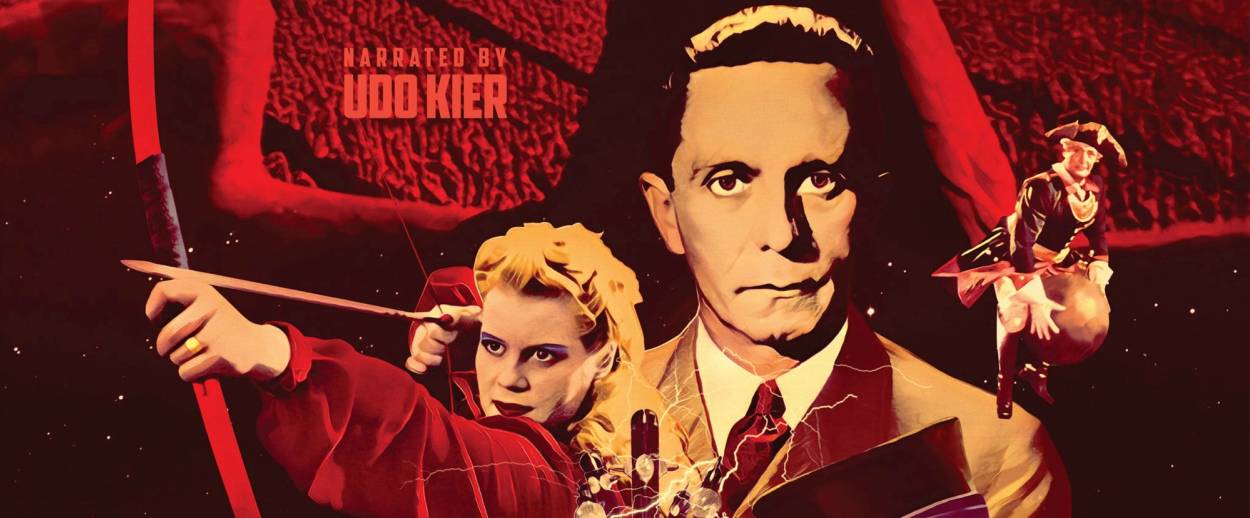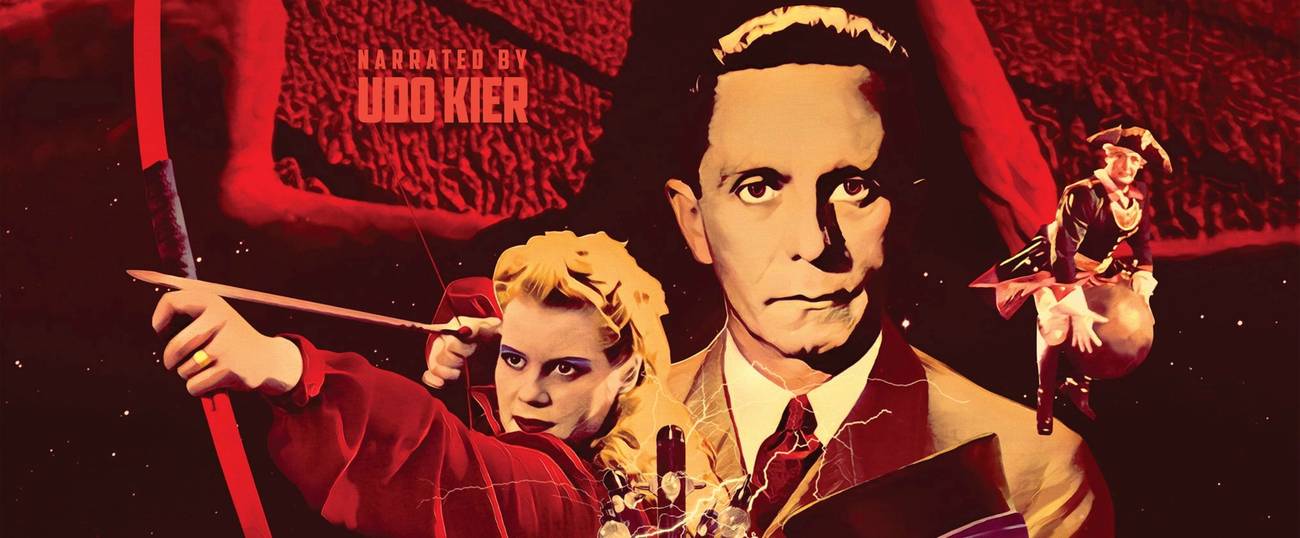New Documentary Film Sheds Light on Hitler’s Hollywood
From demonic Jews to a very gay Sherlock Holmes, Nazi movies used a wide array of tools to boost one simple, murderous message




The Third Reich is unthinkable without its propaganda. And Nazi propaganda is unthinkable without its films. This is the premise of Hitler’s Hollywood, a new documentary on the German film industry under the Nazi regime between 1933 and 1945, directed by Rüdiger Suchsland.
The movie will be screened from April 11 through April 17 at the Film Forum in New York. Watch the exclusive trailer below:
In a political system so obsessed with aesthetics, it’s only natural that films played a significant role in disseminating the Nazi ideology into the minds the German people.
Director Rüdiger Suchsland, who was raised watching classics with his grandmother, a proud anti-fascist, realized how the aesthetic character of the Reich went way beyond the infamous human swastikas and choreographed torchlight parades; it involved the creation of a massive film industry that produced about 1,000 movies and embodied the regime’s imagery of supremacy and its rhetoric of hate. The German filmmaker thought that Nazi cinema revealed much about its time and its people, so he decided to make his own documentary about it.
Welcome to Adolf Hitler’s Hollywood. A monumental spectacle attentively orchestrated by Joseph Goebbels, the Reich’s Minister of Propaganda, whose job involved controlling all German media and, of course, movies. He controlled scripts, castings, everything. In his words, “Propaganda is an art form. [It] has just one objective, and that objective is to conquer the masses.” Through cinema, the regime aimed to captivate the audiences, successfully making them prisoners of an illusion: the Nazi ideology. As Suchsland claims in his documentary: “The whole Third Reich is Goebbels’s film.”
Narrated in its English version by German cult actor Udo Kier, Hitler’s Hollywood is a spine-chilling, yet also dreamy, 100-minute succession of scenes from Nazi-era movies, which emerge as precious historical documents and mirror the main obsessions of the regime. From the fascination with youth—see the scene of a child who receives Hitler’s Youth uniform as a gift from his friends, his face lit in enthusiasm and emotion—to the almost erotic fascination with death, often portrayed as heroic, glamorous, dramatically exaggerated. And, of course, the obsession with looks.
It seems revolting today, but what emerges from Suchsland’s documentary is the subtle acuity employed in the production of propaganda films. Even stereotypes—of which these movies abounded—were sometimes portrayed subtly. In Kapriolen, directed by Gustaf Gründgens in 1937, a woman tries to appear to her man as brave and heroic. “It doesn’t suit you,” the man says. “All your charm has gone. A woman’s face must be soft, tender, and feminine. I like you much better weak.” The woman doesn’t surrender right away; she resists for a bit, insisting on her bravery. The Nazi mindset behind the film was so sophisticated, that it could afford portraying resistance, too.
The diversity of these films is striking. Comedies, burlesque, war movies, musicals, documentaries. Seemingly all genres were adopted; some for direct propaganda, others as a means of a more delicate distraction, like Der Mann der Sherlock Holmes war (directed by Karl Hartl in 1937), two very gay Germanized Sherlock Holmes and Dr. Watson; in the opening scene of the documentary, as both characters sing in the shower, one says: “Alles ist gut,” all is well, encapsulating the essence of the film’s message. All is well.
As World War II approached, however, hatred and incitement became increasingly more obvious in cinema, as well. Blacks were portrayed as barbaric and Jews as disgusting rats. Nazi Hollywood virtually announced the Holocaust in the documentary Der ewige Jude, commissioned by Joseph Goebbels in 1940. In Jud Süß, possibly one of the most famous demonstrations of anti-semitic propaganda, Veit Harlan warned the Arian people from all kinds of Jews, from the stereotyped, dirty ones living in the ghettos, to the subtly assimilated ones. The movie ends with the demonic killing of the Jewish character, a deceitful rapist; it was screened in at least 15 European countries.
Hitler’s Hollywood captures a moment in history and serves as a reminder of the power of art and imagery in propaganda. When students learn about Nazism and wonder: “How was it possible?” their teachers could use this documentary as one possible answer. It was also thanks to Nazi filmmaking that certain ideas became such an intrinsic part of the German people’s collective unconscious during the regime. In the film, Suchsland cites Hannah Arendt: “What convinces masses are not facts, not even invented facts, but only the consistency of the illusion.”
Simone Somekh is a New York-based author and journalist. He’s lived and worked in Italy, Israel, and the United States.